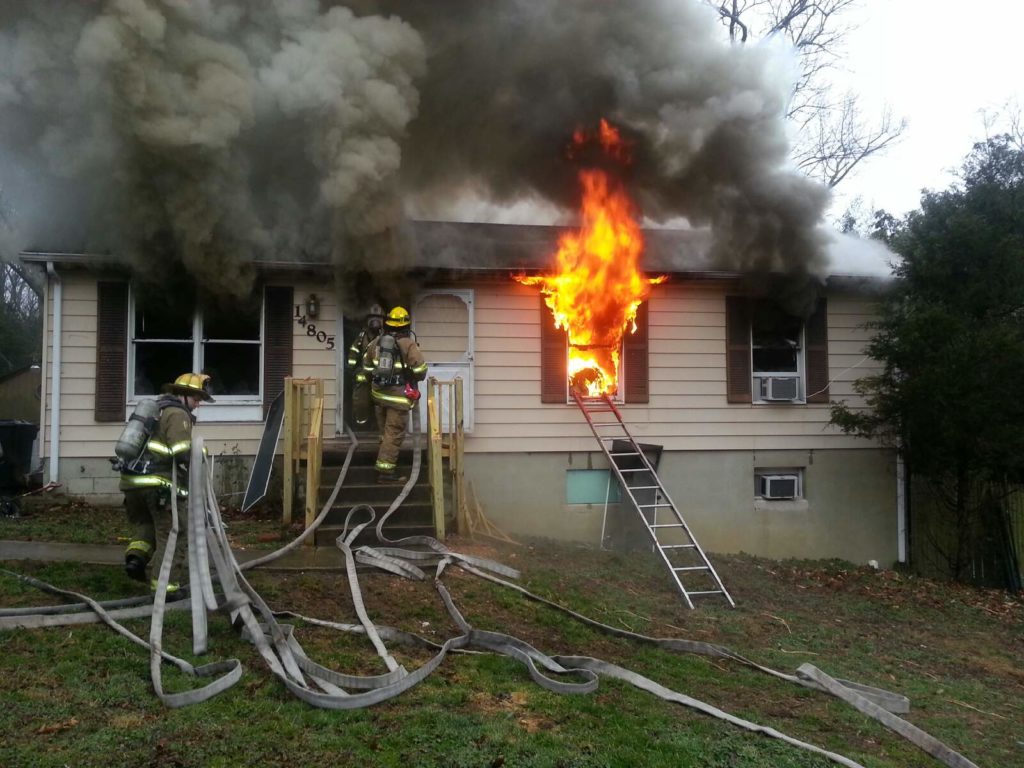How to Train Your Nervous System to Build Your Mental Toughness As a Firefighter
Have you ever noticed that some days you are more resilient and adaptable to stress than others? That actions on the fireground just click and other days it’s a slog to link any basics together or to process any information at full speed? The good news is there’s a way to train these skills and it’s not super complex to accomplish!
Some of these links are affiliate links, which means I may get a commission if you purchase. However, none of the fees of these resources have been increased to compensate me.
A lot of how we process and react to stress falls into a concept referred to as the “Window of Tolerance”. In this series of blog posts we’ll dive into how to train the autonomic nervous system so you can use it as a super power and know you’re ready for the fireground.
First we have to have a general understanding of what’s happening internally so we can intentionally train each area for success. Your body operates using the autonomic nervous system ANS. This is an automatic response (that’s why it’s called autonomic) but your nervous system can be trained with some intentionality using some very simple techniques.
Within the Autonomic Nervous System there are two parts that operate in a homeostatic relationship:
- Sympathetic Nervous System (SNS)
- Parasympathetic Nervous System (PNS)
Sympathetic Nervous System (SNS)
A lot of times you will hear the SNS referred to as the “Fight or Flight” system and most often this is used in a negative connotation. While the SNS certainly is the driver of a fight, flight or freeze response, there are a lot of great things that this part of the nervous system does for us on a day to day basis. We like to refer to the SNS as the “gas pedal” as this system can get us amped up and ready to do some work. Have you ever picked the perfect playlist to get you ready to throwdown at the gym? The reason you did this was to help get you motivated, pumped and ready to workout regardless of your pre-workout concoction that you dumped in your pie hole! The music is a que that you have created to activate your SNS and get your level of arousal/amplitude up so that your super sets or tac fitness workout gets you the most bang for your buck correct?!
The SNS can also be a detriment to us as firefighters once we are on an emergency scene. When the call is stressful or has a lot of visual and audible cues that go against basic human nature we will have an SNS response that will follow shortly. Fire blowing out of the second floor windows, neighbors screaming that someone is trapped, or even a cold and dark scene that is hard to see what the problem is from the cab all will create a sympathetic nervous system response internally. Most of the time, unless you’re highly in tune and have intentionally trained yourself to recognize SNS activation, we won’t even realize that the SNS has been activated and that sometimes it’s working against us as we try and perform at the highest levels.
A SNS response is most typically associated with an increase in heart rate, respiration rate and can even lead into the inability to process any conscious thought and solely fall back into a primal reaction aka Fight or Flight.
Fight, Flight, or Freeze
A considerable amount of discussion has been taking place in the human performance and tactical athlete world over the last few years that the Fight or Flight response maybe was incorrectly named initially. It probably should have been named Flight or Freeze response. The Fight portion is a trained skill and must be learned for most situations. If you watch when a child gets scared do they instantly put up their fists and start throwing haymakers? No! They more often than not Freeze initially and then either process that whatever scared them is actually not a threat or they turn around and haul ass the other way!
You can see the same response in prey animals in how they react once they determine the predator is about to have them for dinner. There’s a quick freeze and then a full speed run. The freeze is typically what gives the predator that split second advantage and allows them to chase the prey animal down or pounce before they can turn and beat feet in the other direction.
Once we as firefighters realize that there is an inherent reaction to freeze, it allows us to work on training our fight response. We also know that this is a very real possibility for recruits in the academy, a problem on their first working job, or even a seasoned vet on scene if they aren’t confident in their abilities to deal with and react appropriately to the problem at hand. We could break each of these issues down in a full blog series each unto themselves but that’s not the point of this round so we’ll leave it at that.
Train the Sympathetic Nervous System
So how do you train the SNS in a simple format that will ensure your and your crews success on the fireground? Here are 3 simple to implement concepts to help get you started on the right track:
- Tactical Fitness
- Tummo Breathing
- Mental Imagery
Tactical Fitness
Relevant tactical fitness training is hard to beat in almost every metric available. Training for the required job demands will have positive results on the fireground and make you and your crew more resilient and adaptable for whatever the call throws your way. Lifting light objects a lot of times, lifting mid weight objects a medium amount of times and lifting heavy items only a few times all while combining and programming in cardiovascular demands is a simple concept to build from. We’ve compiled 9 Crew workouts here for you to instantly give a shot.
If you’re short on gear Brute Force Sandbags and Rogue Fitness are two awesome spots to start building what you might need.
Tummo Breathing
More commonly known in recent years as the Wim Hoff Method (WHM), the Tummo Breathing technique intentionally pisses off your sympathetic nervous system to release adrenaline, create alkalinity in the blood stream through hyperventilation, and push your SNS response level higher. This pushes your window of tolerance wider and allows your body to work into an over aroused mental state in a safe and controlled environment. WARNING: Be sure to NEVER practice a Tummo session anywhere near or in water. Unfortunately people have drowned even in a few inches of water practicing this technique.
Tummo breathing or the WHM works by over oxygenating the blood stream, dumping off CO2, and then using the over oxygenated blood to practice long duration breath holds aka apnea. The process is simple and here’s a simple protocol to follow:
Breath in through the nose and out through the mouth 30 times. When inhaling focus on using the diaphragm and breathing deep first and then fill the lungs all the way up into the neck. On the exhale let the exhale “fall out” and don’t worry as much about dumping all the air from the lungs. Leave a little air at the bottom of the exhale. Try not to pause at the top of the breath wave or at the bottom of the breath wave but pace the 30 breaths at a moderate to fast rate. Not too fast but not too slow. Shoot for 1 breath per 1 second or 1 breath per 1.25 seconds as a good guide to get you started.
After you reach 30 breaths and after your 30th exhalation, Hold your breath, start your timer and relax as much as possible. You will feel some or all of the follow symptoms because you just intentionally dumped a crap load of CO2 out of your body and changed your blood pH to a more alkaline level: Tingly, lightheaded, drunk sensation, decrease in vision, agitation, itchiness, minor muscle agitation or feeling like you’re going to cramp. This is all normal and part of this process! Remember you’re doing this for yourself, on purpose, with the intent to make yourself tougher and more resilient to stress. Once you get to the point that you feel a strong urge to breathe, Inhale through the nose and then hold a full inhalation for 15 seconds. Once the 15 seconds is up, Slowly Exhale through your nose if possible. This is one round. Do this for a total of 4 or 5 rounds.
Mental Imagery
Mental reps are second only to actual reps. If your department is anything like mine we could certainly use a ton more reps especially with real working fires. So we work super hard on the drill ground, in our first due area, and try and learn as much as possible from the opportunities we do get dispatched to. But we also build in mental imagery work. More than likely you are already doing imagery work and might not even realize it.
Think about the last medical call you ran in a multi family building. Now imagine if that apartment was on fire. Fire is showing from a window on arrival. What does it look like as you pull up on scene? How many people are out in the parking lot and what are they doing? See your rig pull up and where your driver spots to prep for hose lines stretching off the rig. If you’re an officer or acting officer mentally perform a scene size up/arrival report in your brain. If you’re on the nozzle what size line do you need? Now see yourself getting out of the rig as if you were looking through your eyeballs. Feel the weight of your gear as your boots hit the pavement. What do you feel? What do you smell? What do you hear? What are your first actions and what are your instructions to the crew or that you received from the officer? Imagine the stretch, feel the hose line weight on your shoulder and feel as it deploys off the rig. Feel the hose as it flakes off your shoulder and across the grass and feel the weightlessness when you dump the minute man and perform a forward split to the fire occupancy.

Most of us perform some version of this mental rep example and we might not even realize that this is imagery training. By incorporating all of the senses in the image it allows our brains to truly be in the moment. In this example we didn’t build in failure with a successful outcome but that’s another valuable angle for you to try. Imagine if the hose line gets stuck under a vehicle tire, or there’s 2’ of snow on the ground that you trudge through. When we build in failure it makes us more resilient and more mentally tough when we encounter failure on a real call. As you and I both know every single fire that we run is full of micro failures that we work through as we achieve successful fire attack, search, laddering, ventilation and all the other required tasks on the fire scene.
The sympathetic nervous system has been developed over thousands of years to keep us safe, to instantly react to threats and stress, and to ensure survival as the human race. We as firefighters have to realize that physiologically we will respond to stressors on the fireground initially with the eye of survival and potentially will need to consciously work through some nervous system responses to be successful on the fire scene. It doesn’t have to be complicated in how we train our SNS to react in a way that allows us to be aggressive and smart tacticians on any emergency scene.
Next up we’ll dive into the Parasympathetic Nervous system and how we can train the “Rest and Digest” response to make us more mentally tough overall.






